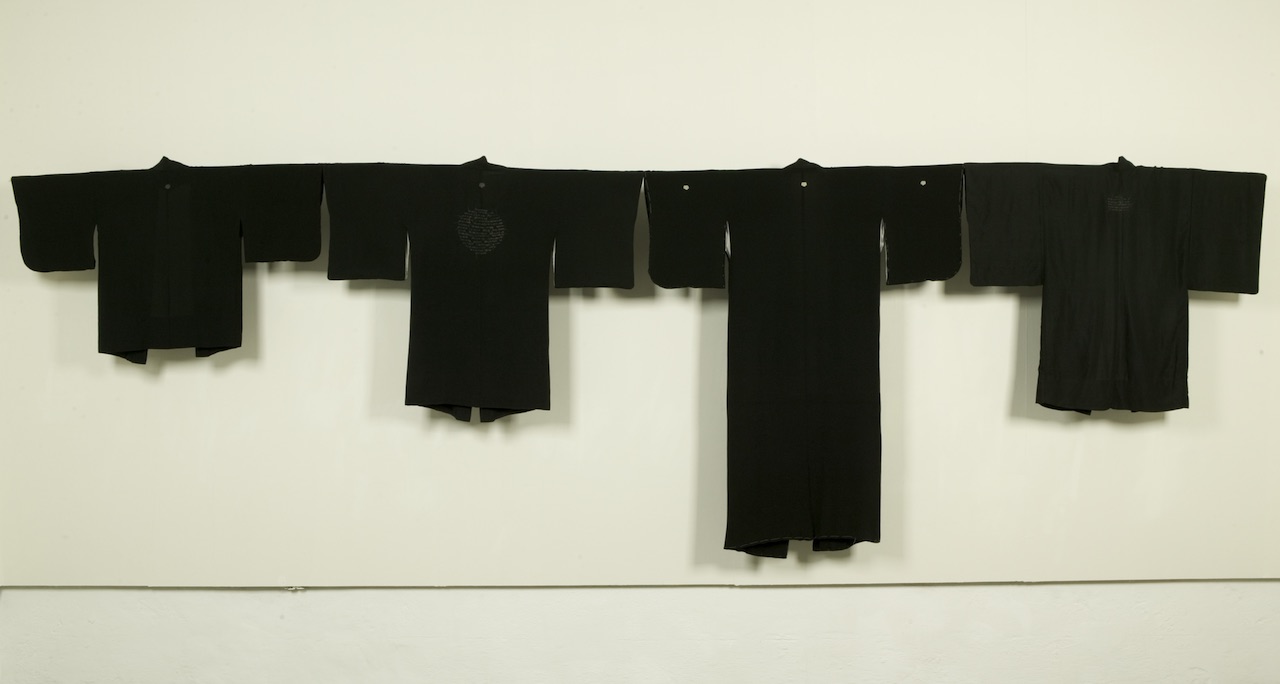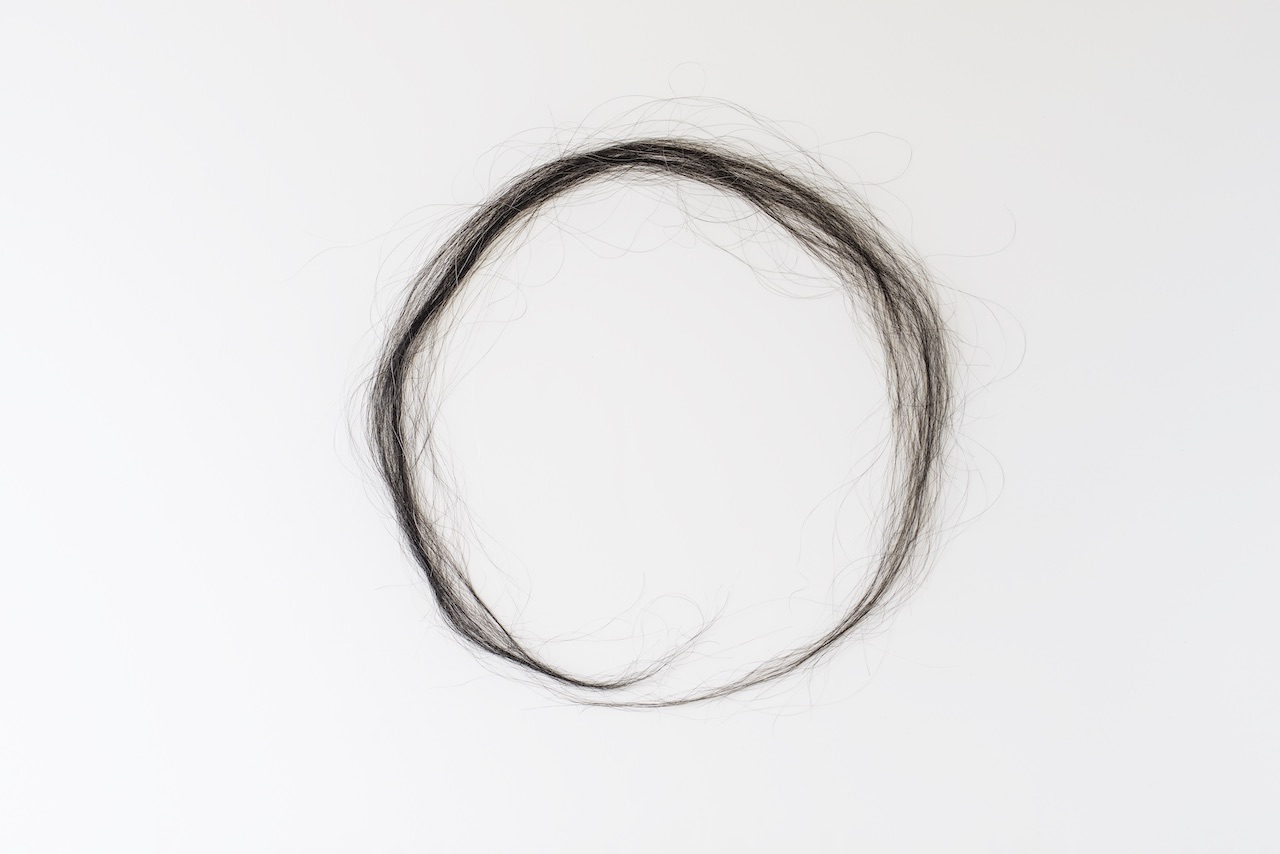
Generations, 2004
artist's hair, vintage silk kimonos, dimensions variable (each kimono approximately 48” wide)
Masako Takahashi uses the Japanese kimonos as a medium in her installation series, Generations. The kimono is an iconic, globally recognized Japanese article of clothing. In Japan, black kimonos are worn by men and women on formal occasions, often embellished with a family crest. In the series, Generations, Takahashi hangs the kimonos with their sleeves touching. This indicates an unspoken intimacy and, as the title implies, the perpetuation of something Japanese from one to the next. Takahashi says, “I add my white hair to the kimonos, in homage to the hardships endured by those who have gone before me. Each kimono represents a life lived.“

Generations, 2004 (detail)

Cargado, 2004
black kimono, artist’s hair, kimonos, approximately 36” x 48”
From Generations Series

The Journal/Diario Series, 2014-2015
human hair hand stitched embroidery on a bolt of silk woven for kimonos
Masako Takahashi embroiders sequential vertical lines using her own invented language to mimic Asian script which cannot be read or spoken. She states, “The journal concept evolved as I began working on kimono cloth, so they can be unrolled, like scrolls, to be ‘read’. A space separates the days. When two spaces are skipped, two days have passed without working.” Takahashi began the first Journal-Diario, after moving back to San Francisco from Mexico to be closer to her aging family. She says, “My concepts of time and heritage became visceral. The daily recording of the passage of time seems to relieve pressure, as I continued making these Journals through the Covid-19 virus period.” The Kimono cloth she uses is woven and sold in bolts of about 12 meters.

Enso, 2003
human hair scanned, printed on archival paper, 24” x 24"
The Enso is a traditional Japanese image representing the Zen concept of absence.
“My first introduction to high resolution scanning was in Oaxaca, Mexico, at the studio of Antonio Turok. I ‘drew’ with my hair on the scanner. Unlike quick office scanners, this one took about 30 minutes, and the detail is minute.”

Centrada, 2003
human hair scanned, printed on archival paper, 24" x 24"







